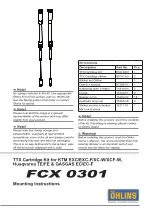
User Manual
Doc. Number: ESO-323064
Doc. Version: 2
Released on:
Page:
66 of 82
Document Classification: Public
Figure 35: Illustration showing the apparent locations of the targets as seen on the SV
detector for the given parameters in the SKY coordinate offsets. If the telescope moves
North, the target moves South on the slit viewer
6.3.2.1 Offset conventions and definitions:
CRIRES follows the standard astronomical offset conventions and definitions.
•
Position angles (PAs) are measured from 0 to 360 degrees. North corresponds to a
PA of 0 degrees, East, to a PA of 90 degrees.
•
All offsets are given in arc seconds.
•
Proper motions must be given in arcsec per year.
•
For solar system objects, additional tracking velocities are given in arcsec per
second.
•
For a position angle of 0 in SKY mode, the reconstructed SV image shows North up
and East left.
6.3.3 Night-time calibrations
Darks, flat fields and wavelength calibrations are taken during daytime as part of the
calibrations plan (see §0 for more details). A Halogen lamp is used for flat fields, while UNe
lamp or the N2O or SGC gas cell in front of the halogen lamp are used for wavelength
calibration.
However, depending on the science goal, additional calibrations can be requested during
the night as well. For instance, dedicated template for wavelength and flats calibrations shall
be attached immediately before or after the science template so that the gratings are not
moved in between. If the use of Molecfit or synthetic telluric spectra is not a valid option for
the correction of the telluric features, then users must supply a telluric standard star OB. If
accurate the science requires accurate flux calibration, then the user must provide a
spectrophotometric standard OB.
















































